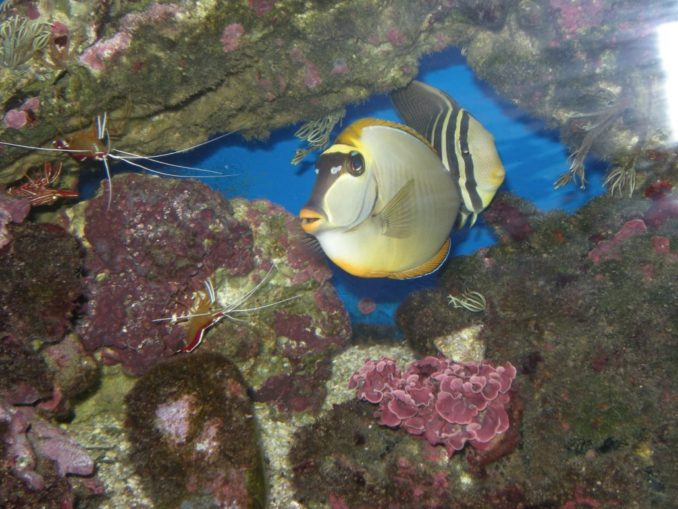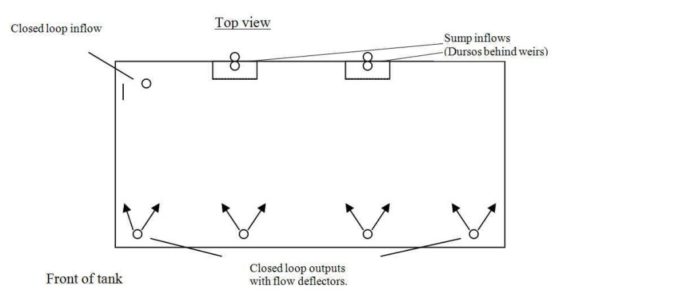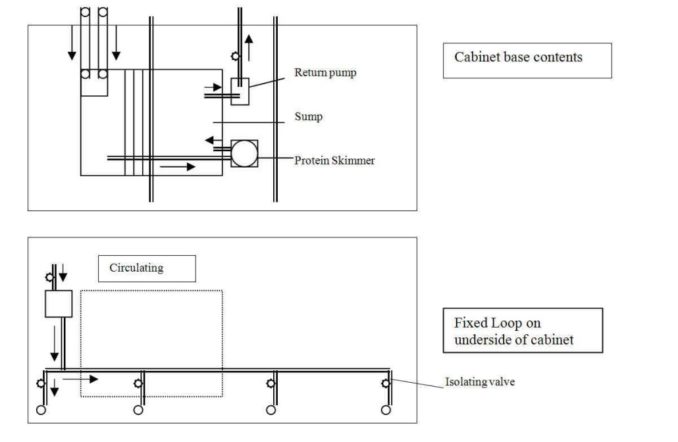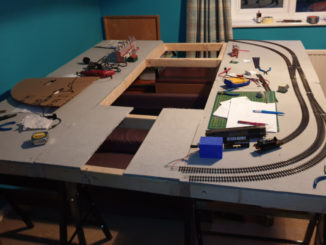A poster asked a question about what would the assembled despicables of GP recommend as a hobby now the nights are long and the weather foul.
The most popular recommendation seemed to be railway modelling – as you could act the dictator and in your own ordered world, make the trains run on time.
Having a similar problem with boredom in the winter time and not wishing to send the entire time in a drunken stupor – taxiing teenagers around often gets in the way of such activities, I looked at a number of options and decided to look at keeping pets.
Not a Med sized dog – with everyone in the house working during the day it’d be cruel to leave an intelligent animal alone. Allergic to cats, and wanted something that could cope with us being away for a week or two.
With an interest in all things mechanical I looked at keeping fish – not the goldfish in a bowl, but doing it properly – marine tropical fish with corals.
To do so is expensive – so much that there are fewer and fewer places selling the kit you need due to the lack of people with sufficient cash. The initial setup is complex, the challenge being part of the fun, the ongoing maintenance is necessary but can be left for a week every so often. Just about everything can be automated. Electricity costs are high.

Having said that fish and in particular soft and hard corals are extremely fussy and will only flourish in very particular circumstances. The water needs to be at an exact temperature, salinity and have a very low level of toxins. This can be achieved but needs equipment and care.
For those who like gadgets the hobby is a dream. To keep the fish and assorted critters alive requires the following:
- Large tank – the bigger the better to keep a stable environment – was a 110 gallon tank – 72in x 36in x 30in when full weighing over half a ton.
- Secondary sump tank – for filtration – 48in x 24in x 24in with internal dividers.
- 2 high energy pumps – 1 for sump 1 for circulation
- Top up pump to counteract evaporation
- Heaters x 2
- UV sterilising light filter
- Protein skimmer
- Lots and lots of electric light – 2kw Halogen was required to keep corals alive – the same as large outdoor security light running 14 hours a day. Often supplemented by specific wavelength fluorescent bulbs. All on timers. I went with flourescents and some primitive LED lights – they were just coming on the market.
- Electric feeder (for when away)
- Air pump to keep the feed in the feeder dry
- Live rock – 100kg usually broken reef rock flown in at £12/kg.
- Reverse Osmosis water generator
- Refractometer to measure salinity and at least two thermometers.
- Salt – a 25kg bucket costing around £50 and lasts perhaps a month.
I bought a second hand freshwater tank from eBay, from a bloke around 50 miles away, two trips to get the glass and the cabinet below home. Time for a plan.

Looking from above you can see four outflows from the closed loop at the front of the tank, in the base, to direct jets of water onto the corals. An inflow is at the back left. Also at the back high up at water level are two acrylic weirs to set the water level and allow water to pass out to the sump below.
In the cabinet underneath was a cramped mess of kit.

The top schematic is the flow from the weirs, into the sump tank. To stop it from flooding the amount of water coming into the sump is governed by the water level at the weirs above. They in turn are governed by the water being pumped out of the sump up into the main tank. If the power fails, the water flows out of the main tank only to the level of the weirs – if you have it right, that is less than the capacity of the sump. The sump itself consists of a chamber where the water arrives, it passes through a series of baffles to calm it, is warmed by the heaters (so no unsightly heaters in the visible tank), passes over some ‘miracle mud’ or filtration sand with a UV tube above before being pumped out again. The two pumps to do all this work are sat in the sump on flexible couplings to keep them cool and quiet. All inputs and outputs have isolator valves, for servicing and ‘just in case’.
The sump holds a bed of sand with a light, containing some plants and algae that filter out toxins. The water passes through the protein skimmer that froths it up, any organic waste being trapped in the froth to be removed every so often.
It then took a month or so to modify before another month of setting up and ‘conditioning the water’ before introducing live critters, rock and finally fish.
Watching the waterscape was fascinating, not least the critters that came in the live rock – not all of them benign.
The shrimps and hermit crabs act as cleaners, initially there was also a task to go in at night and hunt for crabs that had come in with the rock as they predated upon the animals and corals.
Without halogen lights, using four strip fluorescent lights, I was only able to keep soft corals. Attractive but not quite what I was aiming for.
The fish flourished, reacting to company and having their own characters. You can probably guess which one was christened ‘Lilly lipstick’ by the kids.
The maintenance involves fortnight or weekly water changes – removing a proportion of the water for fresh saline. I would usually mix four gallons of reverse Osmosis produced water with salt over a 24 hour period, heating to the correct temperature then feeding into the tank.
The fish fed upon normal flake fish foods and also occasional treat of Nori seaweed sheets that are on sale in ethnic supermarkets.

The end came when having been cleaning the tank prior to some visitors I only put one cable tie on a pump and it blew, actively pumping water into the living room. A cry from the kids had me rushing down to find it had dumped about 40 gallons of saline onto the carpet before I was able to shut all valves and stop the leak. For some reason the other half wasn’t too happy at this. I was already a little fed up with the tank due to the annual cost of around £2k plus lack of hard corals. So all the elements were sold off and we now have one large gap in the corner of the room.
Things to do differently now?
Know the budget will be prohibitive and only go ahead if that is ok.
New technology with LED lights should allow for hard corals – but find decent suppliers first.
© Text & images Sweaty Dave 2016



